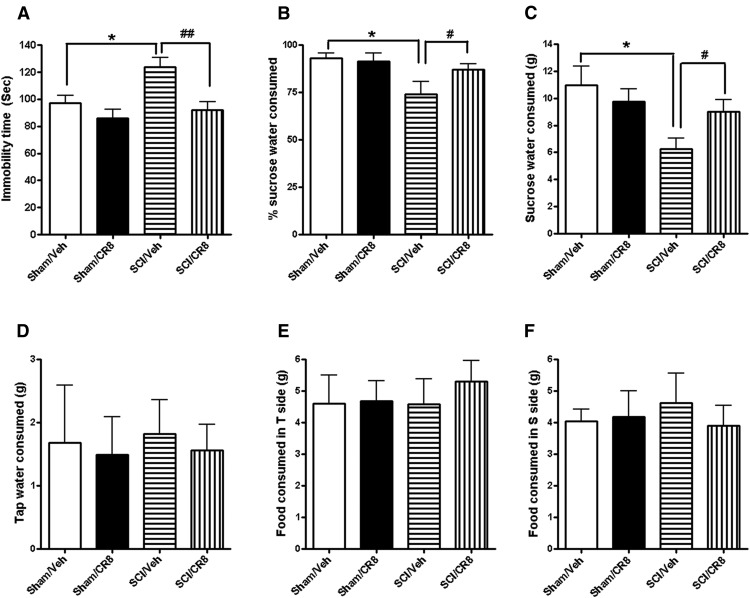Figure 4.
Assessment of depression-like behaviors using the TS and SP tests. A, Sham/Vehicle mice showed an immobility time of 97.3 ± 5.6 s, whereas no differences were found between the Sham/Vehicle (n = 10) and Sham/CR8 (n = 10) groups. However, significantly increased immobility times were observed in SCI/Vehicle group (n = 17, *p < 0.05). CR8 treatment (n = 17) reversed immobility times compared with the SCI/Vehicle group (##p < 0.01). B, C, Both Sham groups similarly preferred sucrose. SCI mice (n = 14) showed significantly reduced percentages (B) or absolute grams (C) of sucrose water consumed compared with Sham mice (n = 10, *p < 0.05). However, significantly increased SP was observed in CR8-treated mice (n = 14, #p < 0.01). D, SCI or CR8 treatment did not alter plain drinking water consumed. E, F, Neither SCI nor CR8 changed food consumed in tap water (T) or sucrose water (S) sides.

